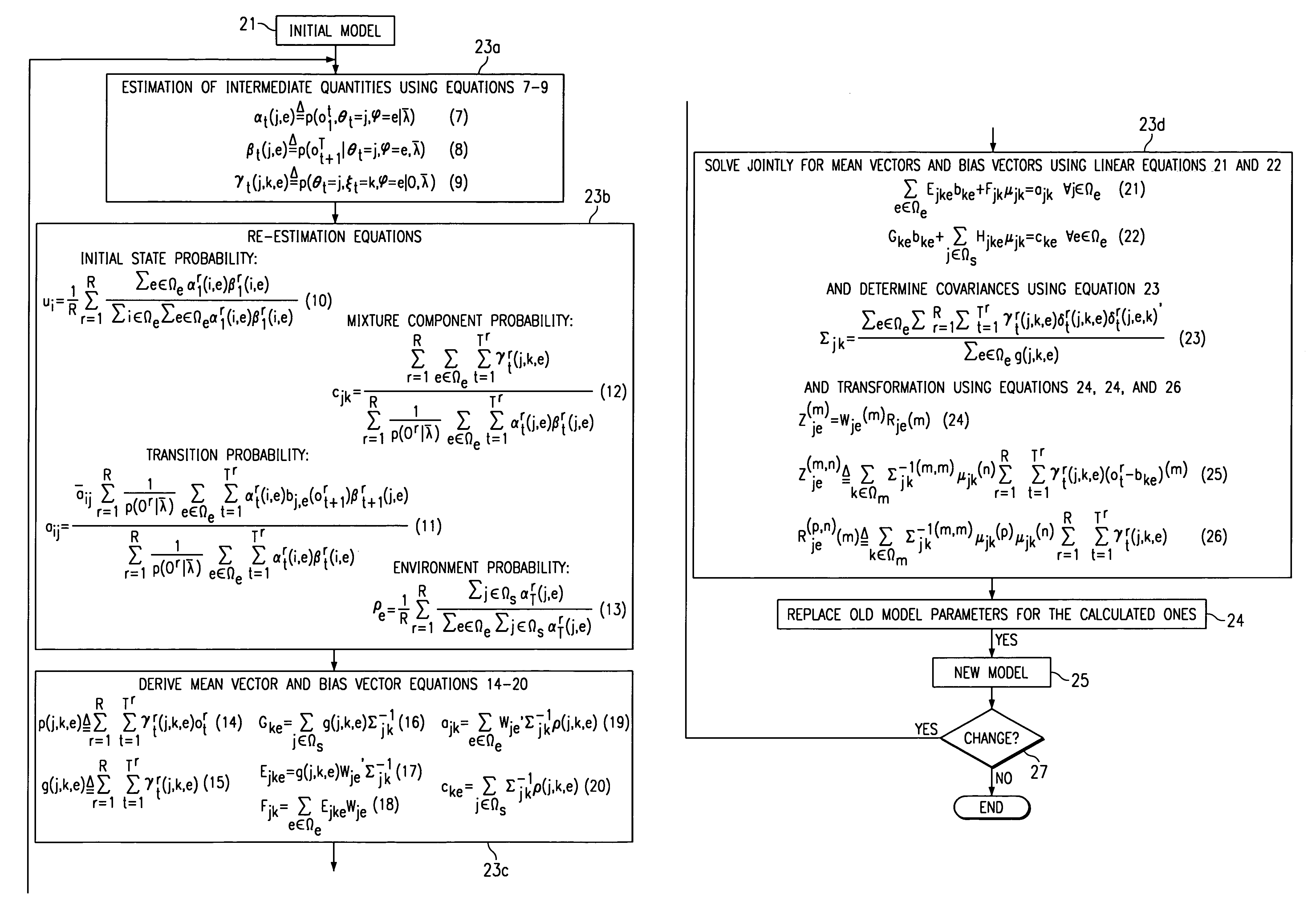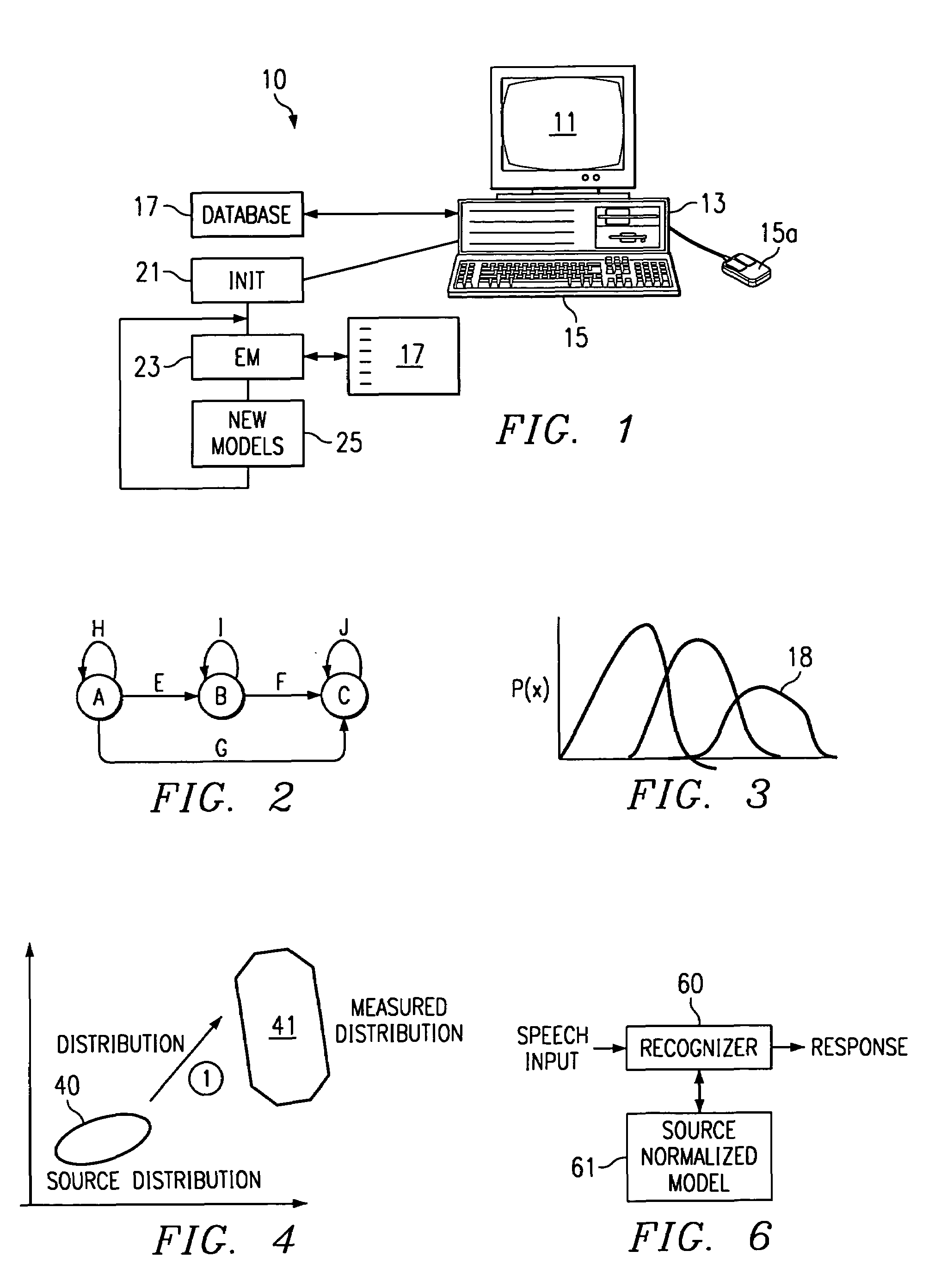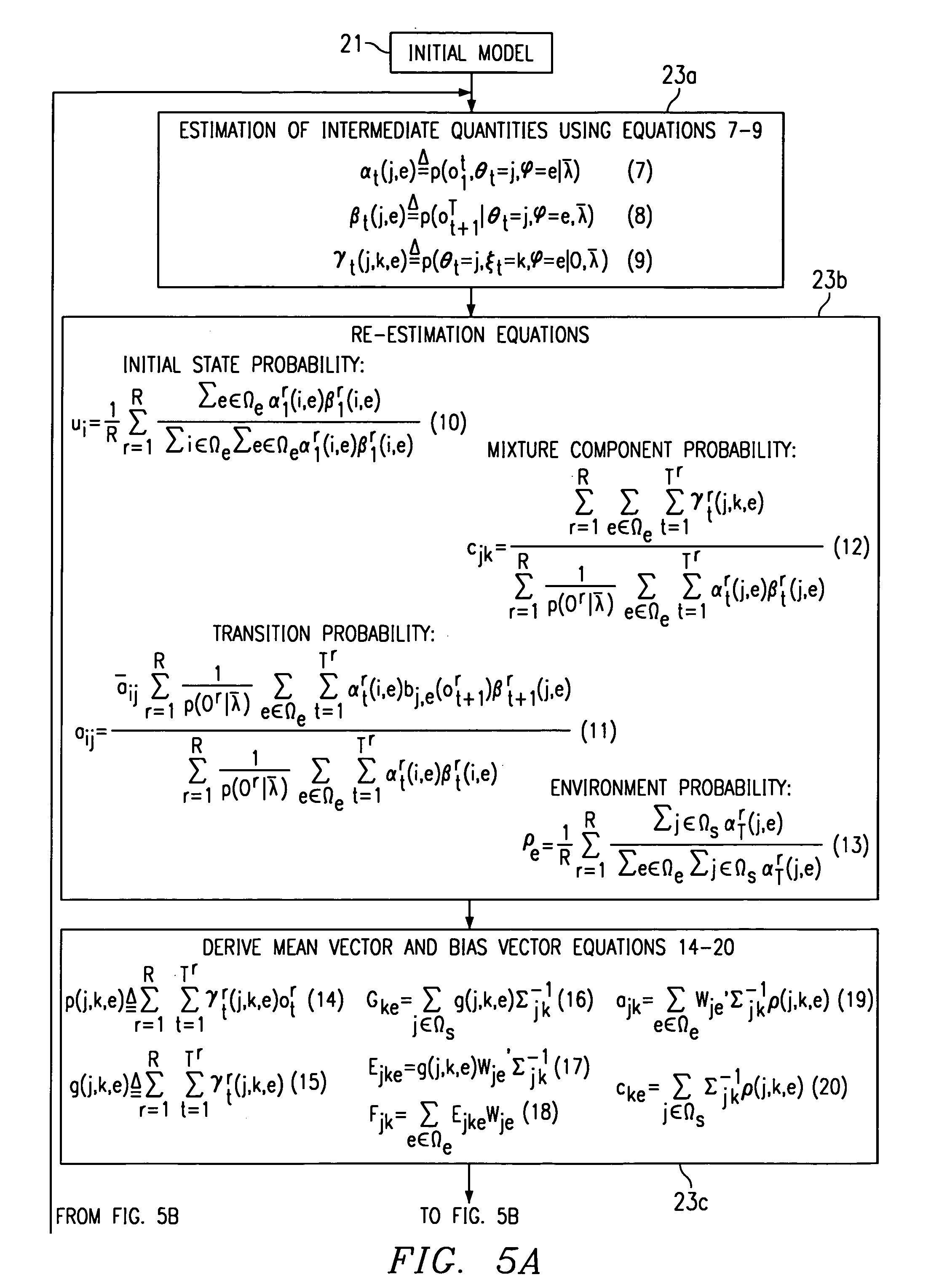Source normalization training for HMM modeling of speech
a source normalization and source normalization technology, applied in the field of training for hmm modeling of speech, can solve the problems of inability to train clusters of classes, inability to discover clusters, and difficulty in identifying clusters, so as to achieve the effect of improving performan
- Summary
- Abstract
- Description
- Claims
- Application Information
AI Technical Summary
Benefits of technology
Problems solved by technology
Method used
Image
Examples
Embodiment Construction
[0015]The training is done on a computer workstation which is illustrated in FIG. 1 having a monitor 11, a computer workstation 13, a keyboard 15, and a mouse or other interactive device 15a as shown in FIG. 1. The system maybe connected to a separate database represented by database 17 in FIG. 1 for storage and retrieval of models.
[0016]By the term “training” we mean herein to fix the parameters of the speech models according to an optimum criterion. In this particular case, we use HMM (Hidden Markov Models) models. These models are as represented in FIG. 2 with states A, B, and C and transitions E, F, G, H, I and J between states. Each of these states has a mixture of Gaussian distributions 18 represented by FIG. 3. We are training these models to account for different environments. By environment we mean different speaker, handset, transmission channel, and noise background conditions. Speech recognizers suffer from environment variability because trained model distributions may ...
PUM
 Login to View More
Login to View More Abstract
Description
Claims
Application Information
 Login to View More
Login to View More - R&D
- Intellectual Property
- Life Sciences
- Materials
- Tech Scout
- Unparalleled Data Quality
- Higher Quality Content
- 60% Fewer Hallucinations
Browse by: Latest US Patents, China's latest patents, Technical Efficacy Thesaurus, Application Domain, Technology Topic, Popular Technical Reports.
© 2025 PatSnap. All rights reserved.Legal|Privacy policy|Modern Slavery Act Transparency Statement|Sitemap|About US| Contact US: help@patsnap.com



